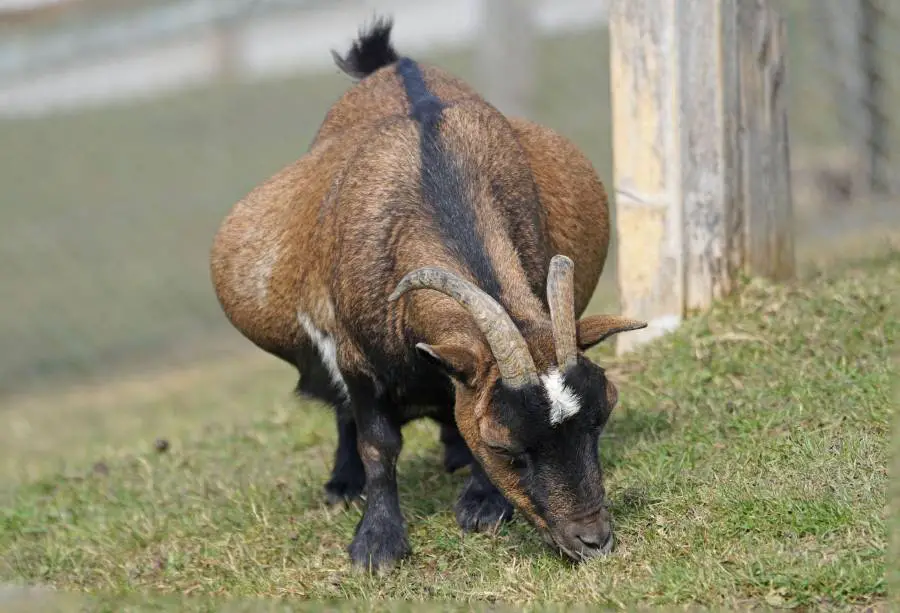Table of Contents
When it comes to animals’ life, we often want it to happen naturally without our help.
However, there’s nothing wrong with being active in your goat’s life, especially during pregnancy and after.
It is not the place to avoid getting involved, even though they can happen naturally.

It is not reasonable to anticipate a human mother-to-be giving birth without the assistance of a midwife. The situation is the same with our goats.
You can induce labor to fasten the process when it’s your goat’s due date, and it’s not happening.
Therefore, to still be on the natural lane, we will discuss several ways to induce labor in your goat naturally.
How To Naturally Induce Goat Labor?
Inducing labor in your goat mainly reduces her stress and gets the baby out as quickly as possible. You can do the following natural methods for your pregnant goat.
Look Out For Problems
Looking out for problems must be the first step before inducing your goat. You should check to see if your doe is having problems giving birth.
If there is a blood-colored, heavy discharge, you can be sure something is wrong.
During labor, your goat may pant and be accompanied by a bubble containing amniotic fluid and the newborn kids.
It would help if you gently tugged her rear legs until she emerged from the breach.
Unless she’s in breach, this will not work if you can learn as much as possible about her pregnancy; your chances of successful delivery increase.
Pulling on the leg might be difficult when dealing with wild goats. And the kid might be hindered by something, such as an egg in the wrong spot.
When this happens, it’s time to call your vet and set up an appointment. Use a shoestring made of solid material to aid her after that.
When handling her, use caution and avoid placing pressure on the stomach. There’s a danger her unborn child won’t survive if she tries to force herself out of the womb.
Best Postures
There are several positions that goats can take while giving birth to their offspring naturally. You can put them into these positions to induce labor.
Usually, when a baby comes out of the birth canal, its front legs are stretched out. Put the goat lying down comfortably without straining the stomach.
A baby can be born in many different ways, such as upside down, with one leg bent back and the other stretched out.
The back end of the body can face forward or with two or more babies intertwined.
To control kids while they are still inside the doe, you need to have the know-how, practice and be an expert.
When a human hand is put into a doe’s body, there is a high risk of infection, even if the hand is covered with gloves. For this task, having a small hand is helpful.
Avoid putting in more of your hand than is necessary, and use extreme caution. Two fingers are the most common way to use them.
Reach as far as you need to turn the head as much as possible. To allow the child’s head to turn, you may need to give them a slight nudge in the back.
Assuming all goes as planned, the baby will be here soon just because of your efforts.
Dilation Process
The cervix dilation is proof that your goat is getting ready. To ensure that your goat’s cervix is dilated, you can try CMPK or MFO.
However, there are times when they won’t work as fast as you want. You will have to do something else.
Give your goat a dose of oxytocin ranging from 1/4 cc to 1/2 cc. It would be best if you administered it intramuscularly to the goat.
Another option is giving her an intramuscular injection of 10 ccs of dexamethasone and 2 ccs of lutalyse.
It should promote cervical dilatation within 24 to 48 hours. However, you will need to check the goat’s inside every four to six hours.
It will enable you to know if the cervix has opened or not. You can visit the vet if you don’t like to let your goat endure such stress.
When a doe’s water breaks but her cervix hasn’t opened all the way, she needs extra help.
Put on disposable gloves, and rub a water-soluble OB lubricant (like KY Jelly) on the glove. You will need someone else to hold the doe still.
It would be best for her to stand next to a wall or fence as much as possible. If you have to do this task yourself, tie her to a fence next to yours.
First, slowly turn it with your index finger, then with your middle and ring fingers, and lastly with your fist.
The idea is that the knuckles will relax the cervical ring, letting you put your hand into the uterus. Even though this tissue is delicate, it is easy to hurt.
Always keep a sharp eye out for anything dangerous.

Parturition
Prostaglandin Lutalyse is the medication of choice for inducing labor in goats. PGF should be administered in doses ranging from 2.5 mg to 20 mg.
Researchers found out that greater doses led to a more predictable delivery time.
After treatment, there is a significant drop in the content of progesterone in the plasma that occurs 24 hours after injection.
Only a few cases have been documented with PGF-induced labor where the placenta has been retained.
Lutalyse will be of help to induce your goat’s labor. It can be used for a doe that is either not progressing in her labor or is past her due date.
It is not as simple as counting the days after a doe was bred to determine its due date. For a dairy-type goat, the typical induction dose of PGF is 10 mg (2cc) of Lutalyse.
However, the typical induction dose for a Pygmy-type goat is 5 mg (1cc) of Lutalyse.
You should be able to anticipate having your kid within 30 to 36 hours at these levels.
If the goat is treated in the morning, she will likely kid in the afternoon of that same day. It is important to remember that the times listed here are just estimates.
Individual goats may require more or less time.
Things To Avoid When Inducing Your Goat
You don’t want to lose your goat’s kid just because you want to induce labor naturally. Give the goat time, peace, and quiet so she can give birth to her kid.
Please do not chase the animal or cause it any other form of stress before or during the birthing process.
It can make her nervous then, disrupt labor and postpone the birth by many hours. Many people start interfering with birth too soon or when it’s not necessary.
It causes more problems than it solves. Suppose there appears to be no development after the waterbag has become apparent.
In that case, you must wait at least an hour before monitoring the goat’s location.
Do not intervene before the water has broken. If labor is regularly progressing, you shouldn’t bother pulling on the baby.
An unnecessary amount of pulling has a high risk of causing injury to both the mother and the newborn. Hard pulling on the kid can easily cause prolapse of the uterus.
It can result in the death of both the mother and the young. Suppose the afterbirth does not come out in the usual manner.
In that case, you should not put your hands in the uterus because you will cause the uterus to become injured and bleed.
You also run the risk of contracting Brucellosis by touching the placenta.
Conclusion
If your doe is familiar with you and has a positive opinion, she won’t mind if you get engaged in the birth process.
Your assistance will not disrupt the mother’s ability to form a connection with her child or children. Also, it is more likely to strengthen that connection.
You will also step in as the child’s mother. However, it would be best to be careful with your calculations before inducing your goat.
The due date for a doe is just as prone to error as a date given for a woman.
It is not enough to go by the doe’s due date when determining whether or not to induce labor.
A mistake in the calculations or observing the breeding process can lead to a devastating conclusion.
